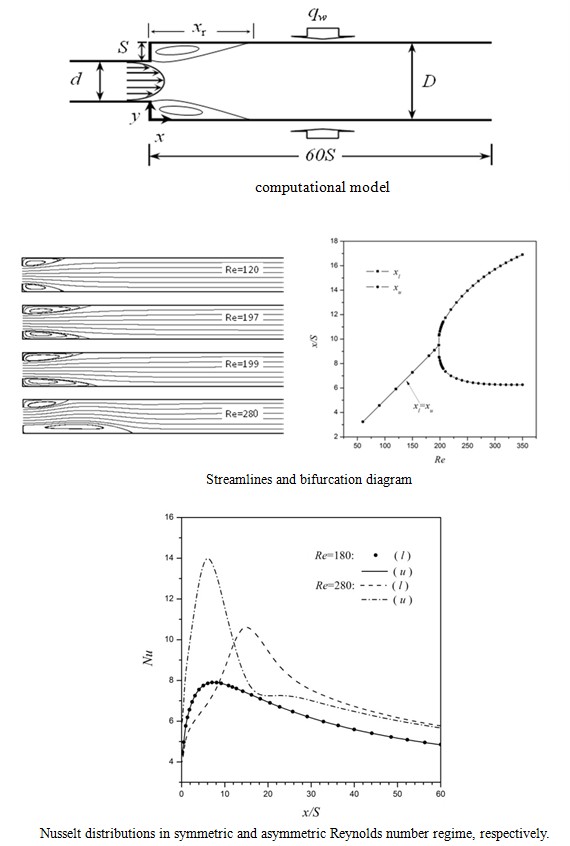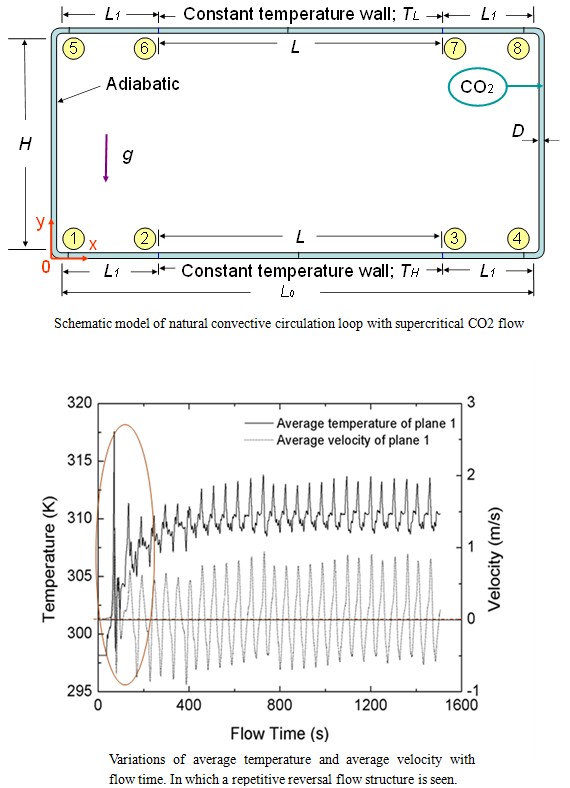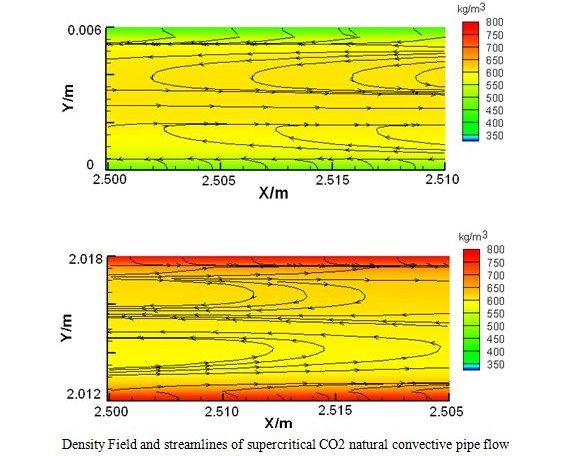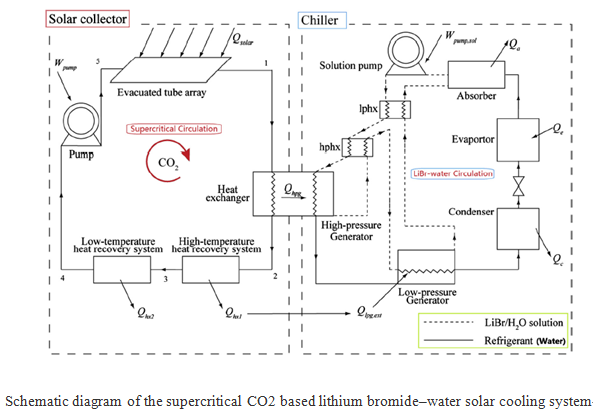Supercritical
flow dynamic and heat transfer
-
Supercritical CO2 natural convective heat transfer and flow
behaviors.
It is found that for
supercritical CO2 flow in a rectangular circulation model, repetitive flow reversal behavior can
be seen. This flow reversal phenomenon is found to be induced by the specific
pressure field formed and could be controlled by optimal design of heat
transfer condition and system geometry. Heat transfer of supercritical CO2 is found to be greatly related
to its temperature sensitive physical properties and even in forced condition
flow it still needs further consideration. These researches should be of great
importance for new generation energy innovations.
-
System stability of supercritical CO2 flow.
In order to further
investigate the system stability and feasibility of Supercritical CO2 natural convection flow,
a series of numerical and experimental studies are conducted. It is found that
the system stability could be controlled by the “second pseudo-critical
Temperature” of CO2 flow where its physical properties reaches the point of
critical change from “liquid-like-flow” to “gas-like-flow”.
-
New generation
Supercritical heat pump.
We studied the system behavior of new generation Supercritical
& Trans-critical heat pump system using natural environmental friendly
functional fluid.
-
Low Temperature refrigeration system utilizing CO2 fluid.
Currently fundamental behaviors and mechanisms of Solid-gas two phase flow with sublimation heat transfer is under research. This topic is based on the engineering demand of new generation refrigeration system design, and it should lead to deeper understanding of low temperature two phase flow and heat transfer, which is critical for engineering design and efficiency enhancement.
-
Forced convection of supercritical CO2 microchannel flow.
Computational study on flow and heat transfer features for forced convection of supercritical CO2 microchannel flow.
-
Design and
formation of a Lithium bromide–water cooling system powered by
supercritical CO2 solar collector
The supercritical CO2 solar collector powered LiBr–H2O
refrigeration system is basically consisted of one supercritical CO2 solar
collector system and one double effect lithium bromide–water absorption
refrigeration cycle. The assessment of the overall performance is based on the
theoretical analysis of the refrigeration cycle and experiments on a
supercritical solar collector system in Shaoxing City, Zhejiang Province of China.
Energy balance and seasonal efficiency analysis are developed in this study.
The maximum daily averaged COP (Coefficient of Performance) of the proposed
system is estimated up to 1.08, while the averaged COP ranges from 0.53 to 0.91
for different months. The obtained results indicate considerable improvement to
conventional solar-assisted cooling systems. In addition, it is also found that
this system performs better than traditional systems even when the solar
radiation is not at high level, which is due to the stability and high
efficiency of supercritical circulation collector cycle proposed. The system
feasibility and possible future directions of the proposed system are also
discussed in detail in this study. It is hoped that the current results can be
of help to related system designs.
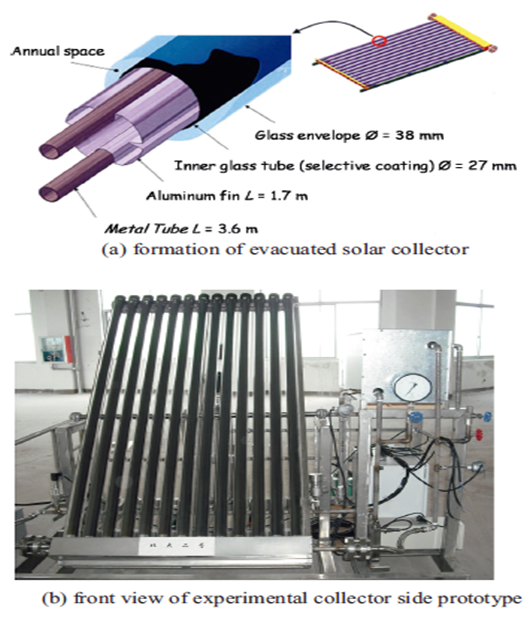
Detailed design of the supercritical
CO2 based collector.
-
Sudden expansion, flow&heat transfer of the supercritical fluids.
Being one of the classical models in the field of separated flows, sudden expansion flow has received extensive studies for its simplicity in geometry and inclusion of flow and heat transfer features that exhibited in more complicated separation flow geometries. It’s well known that there exists a critical Reynolds number (Rec) above which flow asymmetric according to the central plane occurs due to a pitchfork (symmetric-breaking) nature for two-dimensional laminar flows in symmetric sudden expansion.
Much attention of previous numerical studies was paid on the nonlinear stabilities. Nevertheless, results of these published works are limited to the flow behavior in this flow geometry only, with no heat transfer be associated. We investigate the flow and heat transfer features of supercritical CO2 flow in plane symmetric sudden expansion.
